OROFACIAL W4 Development, Form, and Eruption
1/50
There's no tags or description
Looks like no tags are added yet.
Name | Mastery | Learn | Test | Matching | Spaced |
|---|
No study sessions yet.
51 Terms
When do tooth buds/tooth germ begin to grow? Where do they first develop?
6th week of fetal life
Develop/grow within the alveolar process of the fetus
Define Tooth Germ
small clumps of cells that have the ability to form tooth tissues (dentin, enamel, cementum and pulp)
What is the early tooth socket called?
Crypt → later develops into the alveolus
Define Dental Lamina
a band of epithelial tissue that covers the embryonic jaw and grows into the developing gums. it also gives rise to the enamel organs of the teeth.
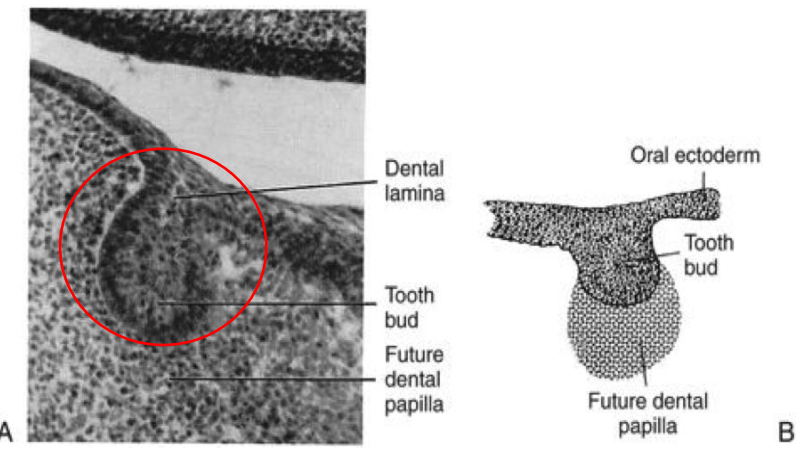
The early stage dentin formed during fetal development is called?
Primary dentin → it occurs BEFORE root completion
Define Primary, Secondary and Tertiary Dentin.
Primary dentin:
Formed before root completion
Makes up the bulk of the tooth
Secondary dentin:
Starts to form after root formation/completion and continues to form within the tooth throughout life
Tertiary dentin (aka reparative dentin):
Formed in response to stimuli (e.g. caries, trauma)
Localized, irregular, and protective
laid down as protection for the pulp
What month does primary teeth begin to calcify?
4-5 months into fetal development
Define tooth calcification. How long does the process continue on for in Primary teeth?
Calcification → hardening of the tooth tissues by deposits of mineral salts
process of primary teeth calcification continues until 3-4th yr of life after birth when deciduous roots become fully formed.
When do permanent teeth begin to calcify?
Soon after birth, permanent teeth will begin to calcify and continues until about 25th yr of life.
Which is the last area of the tooth that becomes calcified?
apex of the root
The growth centers of the tooth germ develop into?
Developmental lobes
Each tooth can have how many growth centers?
4 or more
What is coalescence?
The fusion of the developmental lobes
What is formed as a result of coalescence?
Developmental Grooves → junction formed from the union of the develop mental lobes
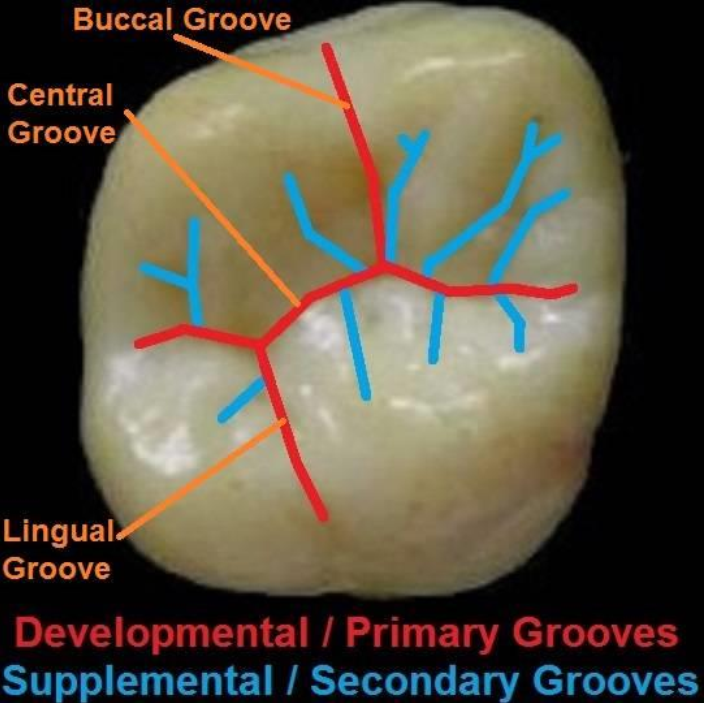
Why are developmental lobes necessary for tooth formation?
Each lobe contributes to a specific tooth structure (e.g. cusp, incisal edge)
What determines how many developmental lobes a tooth should have?
Depends on the specific tooth and how many cusps it has
Ex:
Anterior teeth: 4 lobes (3 labial + 1 lingual = cingulum)
Premolars: Usually 4 lobes (3 buccal + 1 lingual), some have 5
Molars: 4 or 5 lobes, depending on the number of cusps
What are Mamelons? When are they evident?
The incisal ridges of the labial developmental lobes.
evident after eruption of the incisor teeth
The anterior teeth develop from how many lobes? What do they develop into?
3 Facial/Labial and 1 lingual lobe
3 Facial/Labial lobes develop into the incisal edge (mesialfacial, centrofacial, distofacial)
Lingual lobe develop into the Cingulum
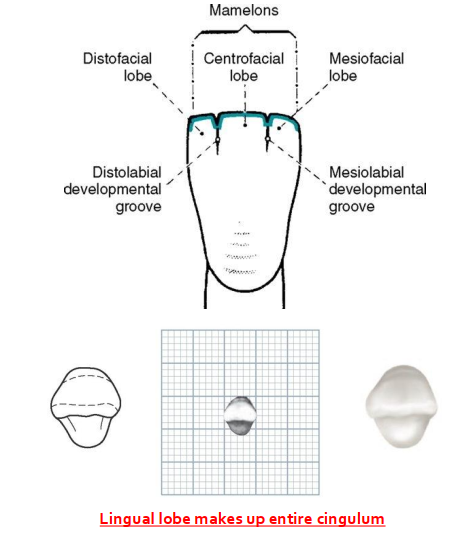
The premolars develop from how many lobes? What do they develop into?
3 facial lobes and 1 lingual lobe
3 labial lobes form one high buccal cusp
lingual lobe develops into a large lingual cusp
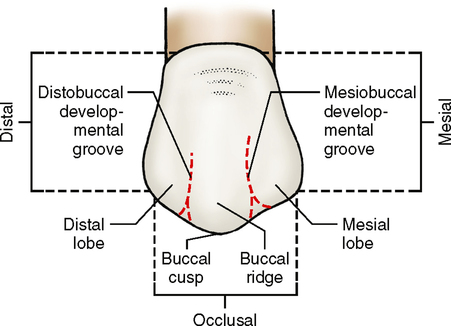
How do the developmental lobes differ between max and mand premolars?
Mand FIRST premolar (34/44) have a smaller lingual cusp than the maxillary premolars

What are the special features of the mandibular 2nd premolars?
Mandibular 2nd premolars have several distinguishing features:
2 or 3 cusps:
3-cusp type (most common):
1 buccal + 2 lingual (mesiolingual lobe is larger than distolingual lobe)
additional developmental groove between two lingual cusps
2-cusp type: 1 buccal + 1 lingual
Occlusal patterns:
Y-shaped (3 cusps)
H-, U-, C-shaped (2 cusps)
2 Pits
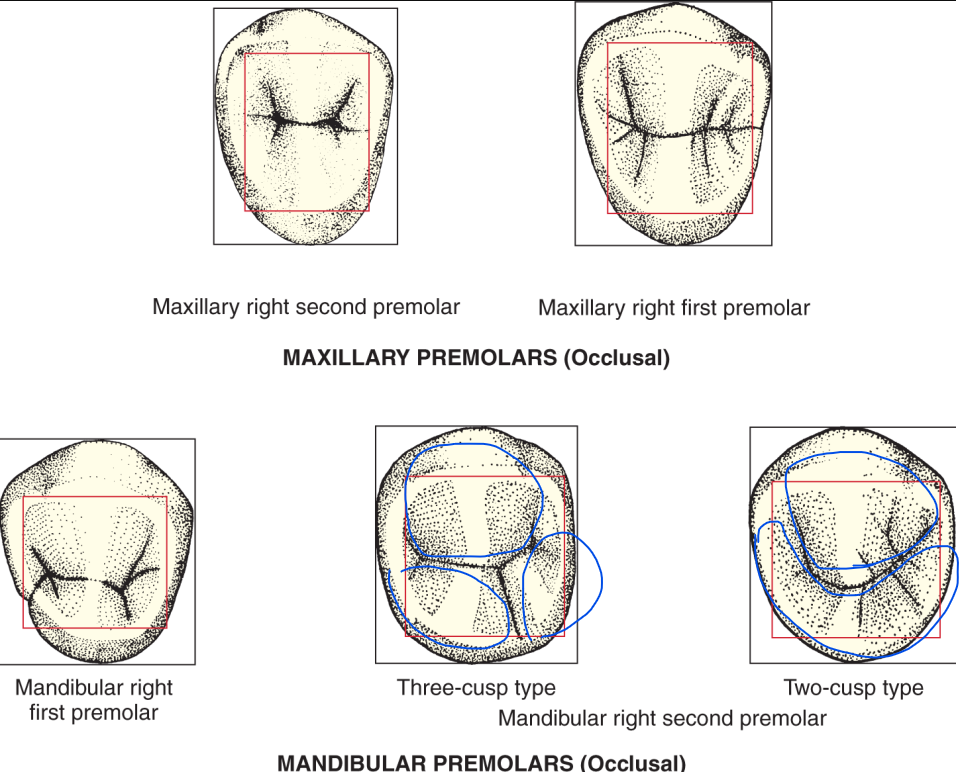
What are the lobes that make up the maxillary 1ST molar?
Maxillary 1st Molar (16,26,36,46) → has 5 developmental lobes
2 Major buccal lobes (mesiobuccal, distobuccal)
1 major lingual lobe (mesiolingual)
1 minor lingual lobe (distolingual)
1 lingual rudimentary (underdeveloped lobe) → aka Lobe of Carabelli
Each lobe develops into a cusp with the corresponding name to the lobe.
The lobe of Carabelli does not develop into a cusp. → develops into a tubercle (small cusp like elevation)
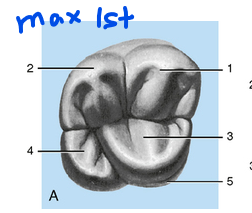
What are the lobes that make up the maxillary 2nd molar? How do they differ from max 1st molar?
Maxillary 2nd molars (17,27,37,47) are typically made up of 4 developmental lobes:
2 buccal lobes:
Mesiobuccal lobe
Distobuccal lobe
2 lingual lobes:
Mesiolingual lobe
Distolingual lobe
Note:
Max 2nd molar is smaller in proportion to max 1st molar in ALL cusp proportions.
In some cases, the distolingual cusp is very small
No lobe of Carabelli

What are the lobes that make up the maxillary 3rd molar? (Wisdom teeth)
Maxillary 3rd molars typically have 3 major lobes:
Mesiobuccal lobe
Distobuccal lobe
Mesiolingual lobe
The distolingual lobe is often underdeveloped or absent.
Max 3rd molars can be unpredictable in size and shape.
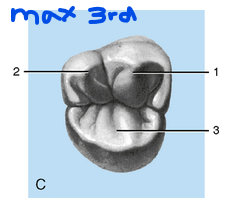
The mandibular molars are more or less the same as maxillary molars in terms of lobes and cusps. How are they different?
Maxillary molars have 2 lingual cusps, mandibular molars have 2–3 buccal
Maxillary 1st molars may have a 5th cusp (Carabelli)
Mandibular 1st molars usually have 5 full cusps, more than maxillary

By which month of fetal development have all deciduous teeth begun to develop?
6th month
Which infant teeth are not considered part of deciduous dentition?
If infants are born with erupted teeth, they are NOT part of the deciduous dentition.
What can alter the formation of teeth or even completely stop the formation or mineralization of teeth?
fever, metabolic dysfunction, childhood or nutritional diseases, physical illness or trauma
What are the 3 eruption rules?
Mandibular teeth precede maxillary teeth
Teeth in both jaws erupt in pairs (i.e. central incisor pair, premolar pair, etc)
Permanent teeth erupted slightly earlier in girls than boys.
** there is no gender difference in eruption of deciduous teeth
Write out the Deciduous eruption timeline.
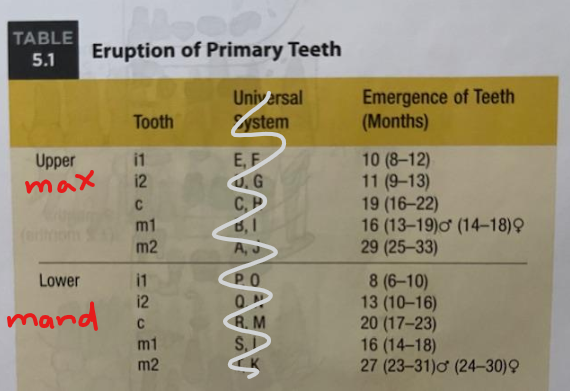
What is canine eminence?
Canine eminence is the supporting bony ridge on the facial surface of the maxilla overlying the root of the maxillary canine.
Created by the long, thick root of the canine
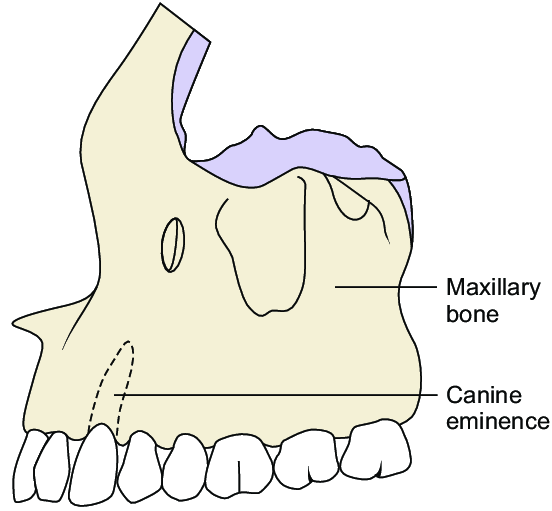
By what time are all deciduous teeth are expected to have erupted?
2.5 years old
What causes the spacing between teeth around the age of 5 years old?
increased growth of the jaw (not growth of teeth)
Premature loss of deciduous teeth may cause..?
abnormal jaw growth and development
Which teeth are the foundation for the rest of permanent dentition development and eruption?
First permanent molar position
What guides the 1st permanent molar into its correct position?
Deciduous dental arch
Write out the eruption timeline for permanent teeth
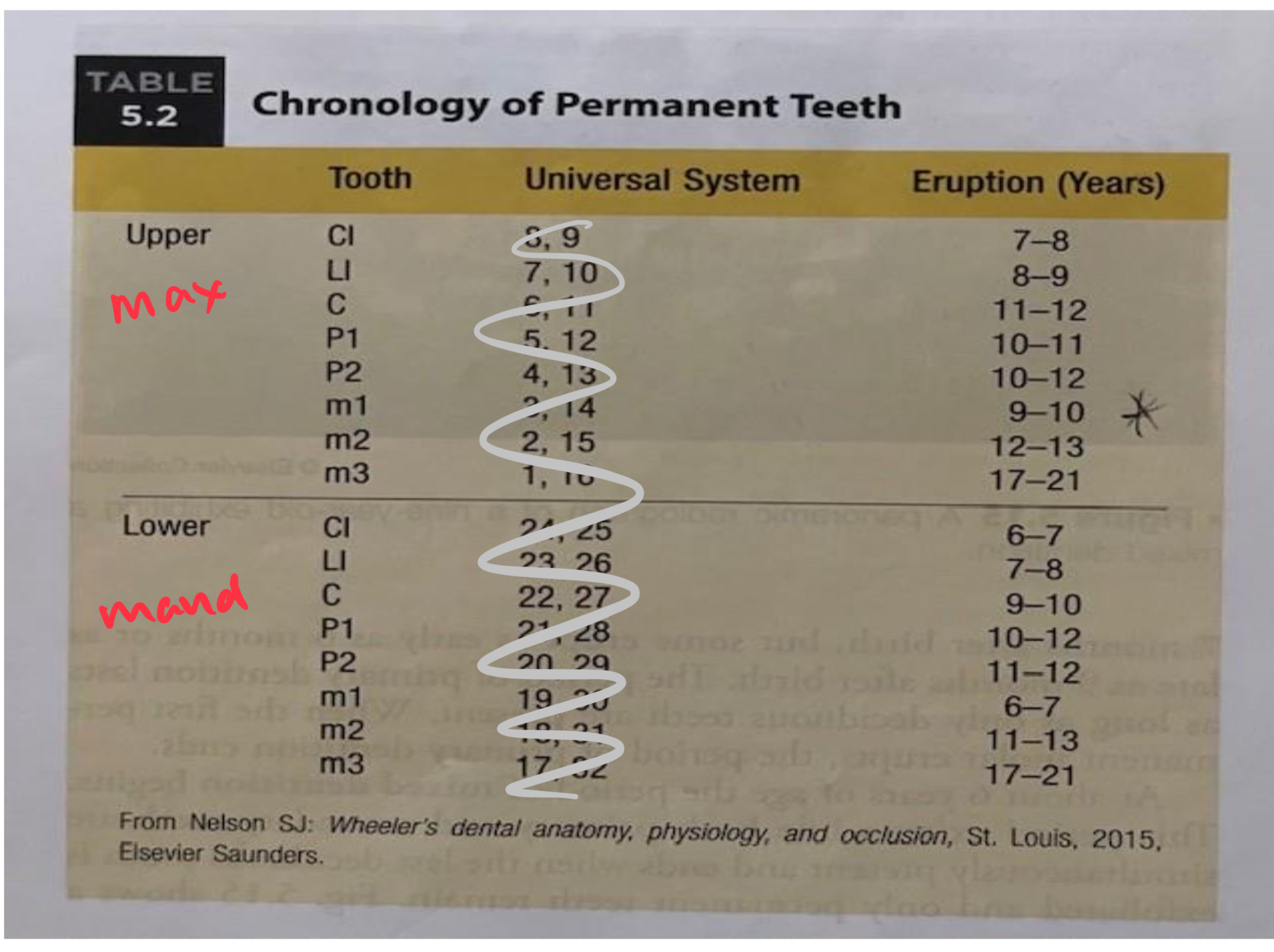
Which permanent teeth are the first to emerge? Where do they emerge in relation to the deciduous dental arch?
Mand. 1st molar (around 6y/o) - emerges DISTAL to the deciduous second molar
What is mesial drift?
The tendency of permanent molars to have an eruptive force towards the midline. It is strong enough to move the permanent molars into any available space mesial to them.
What are the 2 direct effects of mesial drift on the primary dentition?
Closes the spaces between the primary teeth
If deciduous tooth is prematurely lost, the permanent 1st molar moves mesially into the available space which may prevent the premolar or canine from properly erupting
The permanent incisors are able to take over the position held by primary incisors because of …? Define.
Exfoliation → the process by which the roots of a baby tooth are resorbed and dissolved and the baby tooth falls out
What triggers the resorption of the roots of deciduous teeth by activation of osteoclasts?
Pressure applied by the eruption of permanent tooth on to the deciduous root
Permanent incisors sometimes erupt ___ to the deciduous incisors.
Lingually
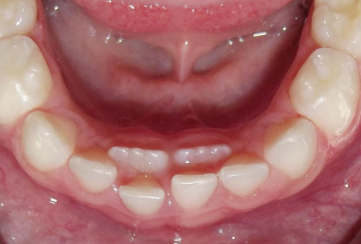
Typically, teeth erupt in pairs in their respective quadrants. Which teeth do not?
Maxillary canines.
They often lack space due to earlier eruption of lateral incisors and premolars
Long eruption path from high in the maxilla
One may erupt earlier or easier if there's asymmetry in spacing or jaw development
The eruption rule says mandibular teeth erupt before maxillary teeth. Which maxillary teeth are a common exception to this rule?
Maxillary premolars are often seen erupting before the mandibular premolars
Which tooth is also called the 12 year molars?
maxillary second molars
Eruptive forces do not cease after the eruption of the third molars. Why?
Eruption continues because of Attrition.
Attrition is the wearing away of the tooth through contact of its functioning surfaces.
Scientist Von Spee noted that the ___ and ____ of the teeth tend to follow a _____ line. What is this curve called?
cusps and incisal ridges of the teeth tended to follow a curved line.
the line of occlusal surfaces forms the occlusal plane
curved alignment of the occlusal plane aka curve of Spee
When does the period of primary dentition begin and end?
Begins: eruption of first primary tooth (7months after birth)
Ends: eruption of the first permanent molar
When does the period of mixed dentition begin and end?
Begin: ~ 6 yrs old
End: Ends when only permanent teeth remain
When does the period of permanent dentition begin and end?
Begin: when last primary tooth is lost; ~12 yrs old
End: when the last permanent tooth is lost (hopefully never)